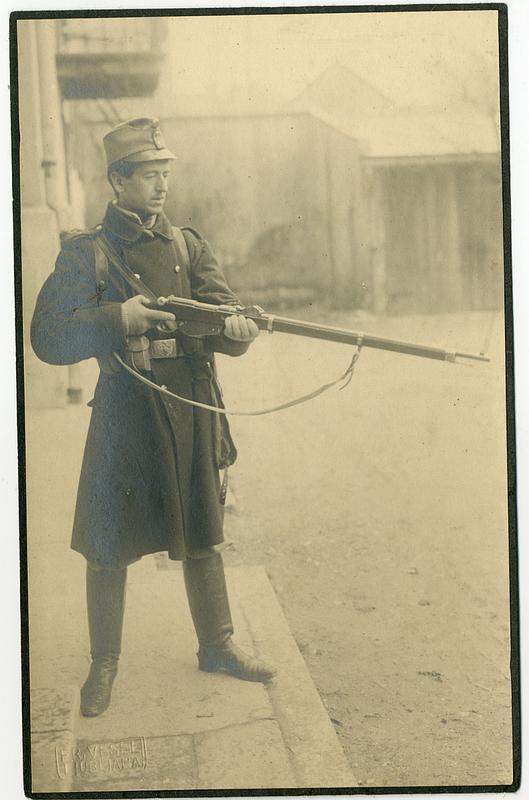

Smrekar was born in Ljubljana in 1883. His father was a porter, and when young Hinko was just eleven years old, the family house was destroyed in a powerful earthquake. Despite the difficult circumstances, Smrekar excelled in school and was eventually admitted to law school in Innsbruck. But he had a restless mind, and he abandoned his studies, choosing instead to devote his life to art.
He received his training at private art schools and soon emerged as a supremely talented illustrator. He met Ivan Cankar, Slovenia’s foremost writer of the age, and designed covers for several of his books. Smrekar also contributed to the satirical weekly Osa, which skewered the politicians of the dying Austro-Hungarian Empire. Smrekar’s cartoons also frequently focused on the absurdity of modern society.
During World War I, Smrekar feigned mental illness to avoid military service and became well-known for his pacifist cartoons. He also went on to create a uniquely Slovenian design of tarot cards.
Despite frequent illnesses, he was a prolific illustrator and worked on a number of books – both Slovenian and international classics. For a while, he even ran his own satirical newspaper, until the death of his mother – with whom he shared his home – left him in financial difficulties. To supplement his meager income, he tutored budding young Slovenian cartoonists.
After Ljubljana was occupied by the Italians during World War II, Smrekar kept on creating antiwar art and challenging the authorities with his drawings. One day, the Italians found him in possession of illegal resistance literature. The artist who had always remained true to his ideals was arrested and executed at a killing field outside Ljubljana in October 1942.


































































